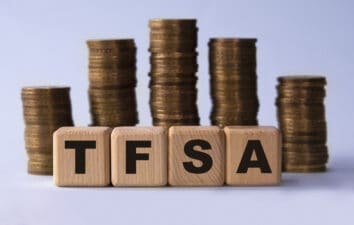On Wednesday, the Bank of Canada raised its benchmark interest rate by 25 basis points, or one-quarter of a percent, to 0.75%.
The Canadian dollar shot up by 1.05 cents in the wake of the news as higher interest rates will typically lead to strength in a country’s currency.
It was the first time Canada’s central bank has raised its benchmark rate in seven years.
Speaking at a press conference, Bank of Canada governor Stephen Poloz told reporters that the Canadian economy is robust, fuelled by household spending.
There’s no question that the biggest effect on Canadians coming out of the rate hike will be higher payments on their mortgages and other consumer debt.
Canadian lenders like Toronto-Dominion Bank (TSX:TD)(NYSE:TD) and Royal Bank of Canada (TSX:RY)(NYSE:RY), even Home Capital Group Inc. (TSX:HCG) all stand to benefit from higher rates, although it should be noted that higher rates should also dampen borrowing activity somewhat.
But beyond higher borrowing costs, there is another, lesser-known impact that Canadian investors should be aware of when it comes to dealing with a stronger Canadian dollar.
First, understanding how the loonie gets its value
When we measure the appreciation in the Canadian dollar, we are typically measuring it against the U.S. dollar.
This is because the U.S. is Canada’s largest trading partner. On top of that, the U.S. dollar is the most actively traded currency in the world.
So, when the loonie goes up in value, as it has recently, to the tune of 8.5% in a little over two months, it comes at the expense of the U.S. dollar.
It shouldn’t come as much of a surprise then that as the loonie has been rising, the U.S. dollar has been falling.
As a matter of fact, the U.S. Dollar Index, which measures the value of the U.S. dollar against a basket of international currencies, has fallen by 6.5% over the past four-and-a-half months.
What this means is that the U.S. dollar is falling in value against most international currencies, including, but not limited to the loonie.
The link between the U.S. dollar and commodities
While some may already be aware of the link between Canadian and U.S. currencies, what many fail to understand is the relationship between the U.S. dollar and commodity prices, and how this impacts the Canadian economy.
You see, commodity prices are set in U.S. dollars.
This means that when a company that sells commodities as part of its business, like Potash Corporation of Saskatchewan (TSX:POT)(NYSE:POT) or Cameco Corp. (TSX:CCO)(NYSE:CCJ), sees the value of the U.S. dollar decline, it needs to raise the price of the commodity it sells to offset the loss in the value of the U.S. dollar.
For example, If the price for uranium was previously US$20, and the value of the U.S. dollar suddenly drops by 10%, now Cameco needs to charge US$22 to maintain its pricing power.
This is why the value of the U.S. dollar and commodity prices hold such strong correlation with each other.
The correlation between the U.S. dollar and commodity prices is about -0.70.
To put that number in context, the correlation between TD Bank and Royal Bank of Canada is about 0.70.
The only difference in the case of commodities and the U.S. dollar is the relationship is negative, meaning that when one goes up, the other goes down.
Commodity prices and the Canadian economy
With the U.S. dollar falling and the Canadian dollar rising, the “deck is stacked,” so to speak, for a rebound in commodity prices.
Miners like the aforementioned Potash Corp. and Cameco stand to benefit from higher commodity prices, as do those companies with operations in the Canadian oil sands, like Baytex Energy Corp, (TSX:BTE)(NYSE:BTE), Crescent Point Energy Corp. (TSX:CPG)(NYSE:CPG), and Cenovus Energy Inc. (TSX:CVE)(NYSE:CVE).
What’s more, the fact that many of these companies are among the largest in the country should have “trickle down” effects on the rest of the economy, providing support for consumer spending and asset prices, to name but a few of the expected tailwinds.
This is part of the reason why the recent interest rate hike made such a big splash in the headlines last week.
Are you going to sit idly by and watch, or are you willing to be Foolish?







